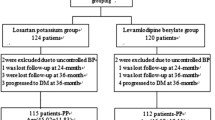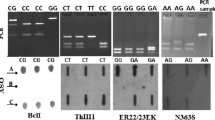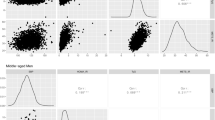Abstract
Objective
To investigate the relationship of insulin resistance and the polymorphisms of insulin receptor-related genes in essential hypertension patients of two different kinds of TCM constitution.
Methods
Oral glucose tolerance test (OGTT) and insulin release test (InRT) were conducted in 217 essential hypertensive patients of either sluggish meticulous (SM) constitution (139 cases) or prosperous impetuous (PI) constitution (78 cases), and the polymorphism of three genes, including insulin-like growth factor-1 receptor (IGF-1R), insulin receptor substrate-1 (IRS-1) and 2 (IRS-2) genes were detected.
Results
(1) OGTT, InRT and insulin resistance index (Homa-IR) were higher and insulin sensitive index (ISI) was lower in the patients of SM constitution than those in patients of PI constitution. (2) Significant difference of ISI and Homa-IR was shown in patients of both constitutions with genotype G of the 3 genes.
Conclusion
Decrease of insulin sensitivity and increase of insulin resistance are more obvious in hypertensive patients with genotype G of the 3 genes of SM constitution than in those of PI constitution. Therefore, the difference in constitution might be one of the genetic characteristics for insulin resistance in hypertensive patients.
Similar content being viewed by others
References
Qian YS, Gong YC, Li H, et al. Relationship between insulin resistance and the traditional Chinese medicine constitution classification in obese patients with essential hypertension. J Zhejiang Coll Tradit Chin Med 2007;31(1):61–63.
Committee of Guidelines on the Prevention and Treatment of Hypertension. Guidelines on the prevention and treatment of hypertension (Trial). Chin J Hypertens 2000;8(1):94–102.
Kuang TY, editor. Constitutional pathology of TCM. Shanghai: Shanghai Science Pervasion Publishing House, 1996:88–90.
Li GW, Long XR, Stephen Lillija, et al. A new insulinsensitivity index for the population-based study. Chin J Intern Med 1993;32(10):656–670.
Haffner SM, Kennedy E, Gonzalez C, et al. A prospective analysis of the HOMA model. Mexico City diabetes study. Diabetes Care 1996;19:1138–1141.
Qian YS, Zhang WZ, Zhou HF, et al. Studies on the relationship of the phenotype and the traditional Chinese medicine constitution of the essential hypertensive patients. Chin J Basic Med Tradit Chin Med 2002;8(2):49–51.
Wang ZT, Han LH. Some thoughts on treatment of hypertension by traditional Chinese medicine. Chin J Integr Tradit West Med 2003;23(9):709–710.
Fu DY, Zhao YG, Ren MZ, et al. Relationship study of syndrome type and target organ damage in patients with hypertension. Chin Arch Tradit Chin Med 2004;22(11):2087–2088.
Qian YS, Zhang WZ, Zhou HF, et al. Relationship of blood pressure variability and TCM constitution classification in essential hypertension patients. Chin J Integr Tradit West Med 2003;23(2):88–90.
Cardon LR, Palmer LJ. Population stratification and spurious allelic association. Lancet 2003;361:598–604.
Author information
Authors and Affiliations
Corresponding author
Rights and permissions
About this article
Cite this article
Qian, Ys., Zhou, Xo., Zhang, Y. et al. Study on insulin resistance and genetic polymorphisms in essential hypertension patients of two different kinds of TCM constitution. Chin. J. Integr. Med. 13, 175–179 (2007). https://doi.org/10.1007/s11655-007-0175-9
Received:
Issue Date:
DOI: https://doi.org/10.1007/s11655-007-0175-9




